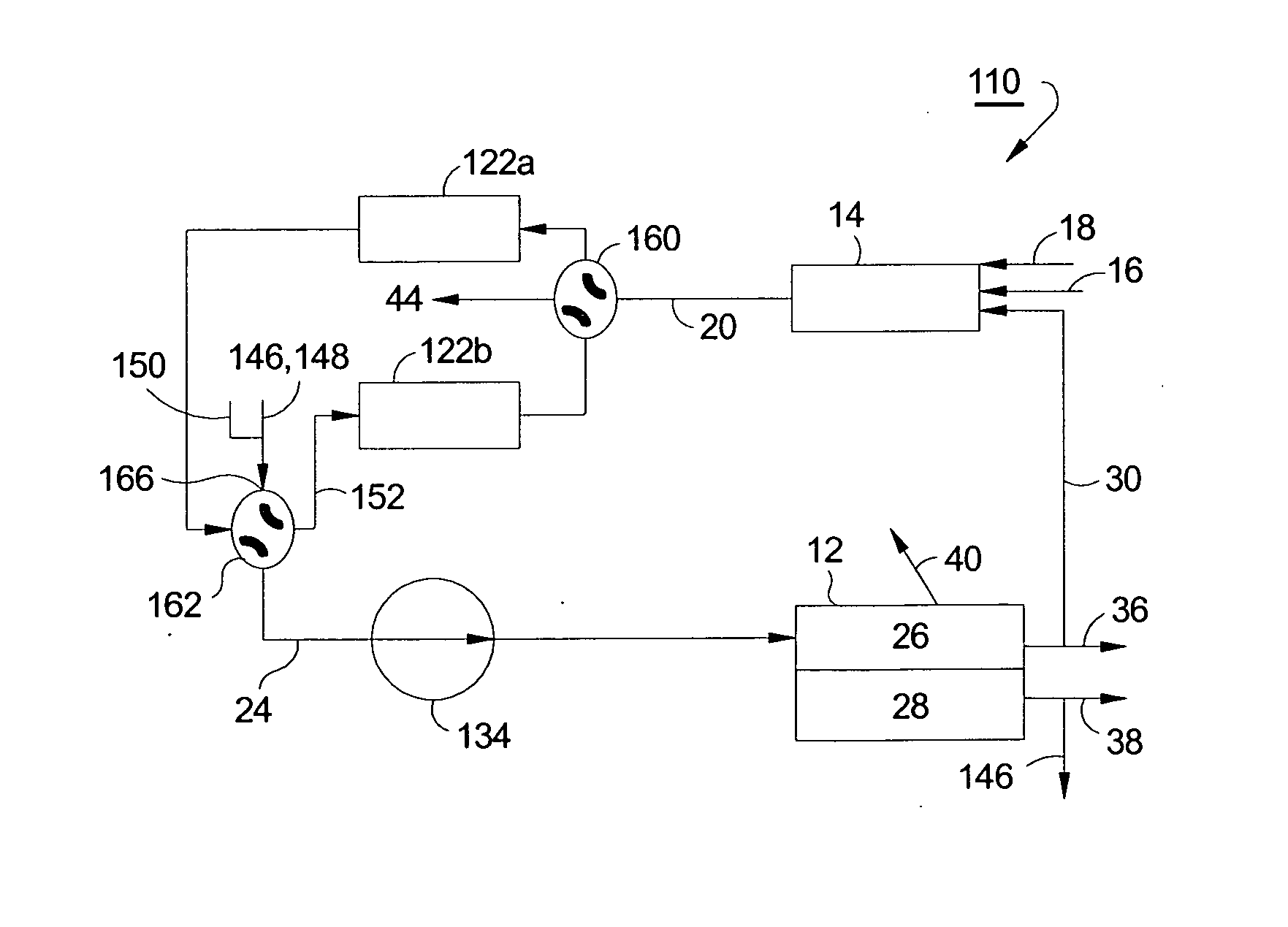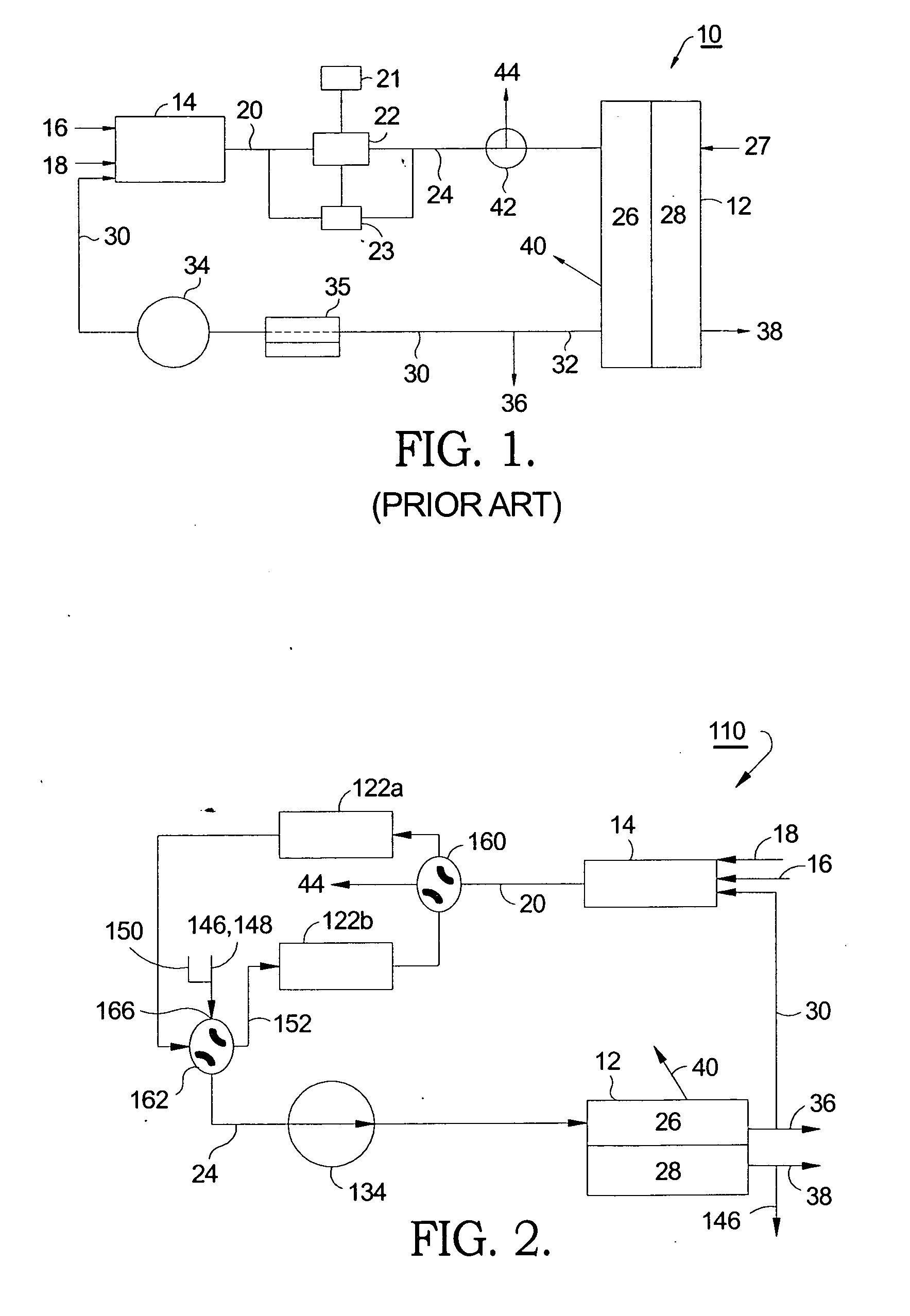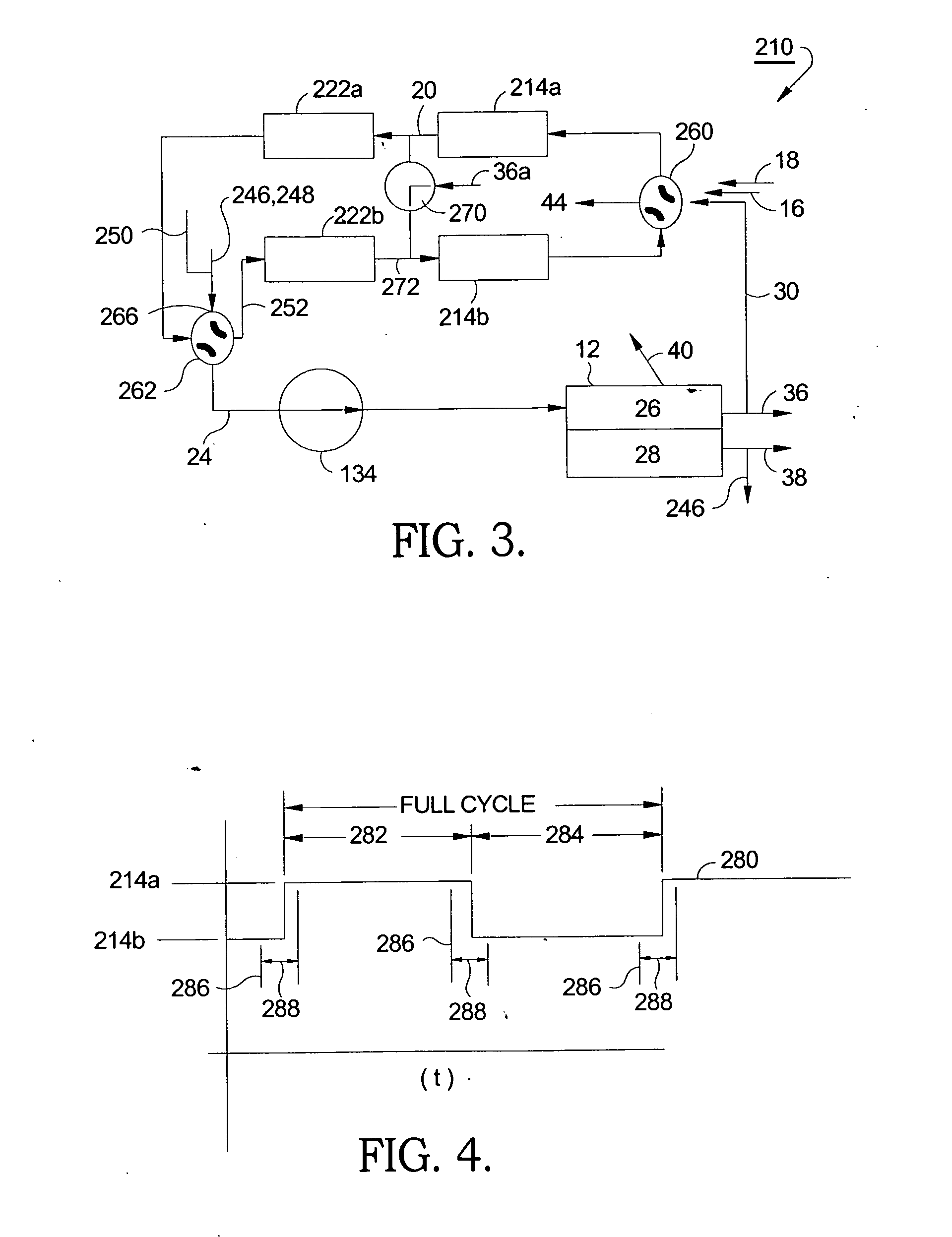Regenerable method and system for desulfurizing reformate
a reformate and regenerable technology, applied in the field of hydrogen-based reforming, can solve the problems of difficult to consistently deliver fuels with a sulfur level less than 30 ppm, fuel cell stacks can be particularly sensitive to sulfur, and sulfur is present, so as to reduce the amount of free oxygen and improve the regeneration effect of reformers
- Summary
- Abstract
- Description
- Claims
- Application Information
AI Technical Summary
Benefits of technology
Problems solved by technology
Method used
Image
Examples
Embodiment Construction
[0017] Referring to FIG. 1, a prior art system 10 includes a fuel cell stack 12, preferably a solid oxide fuel cell (SOFC) stack as is known in the art, although an apparatus in accordance with the invention is also useful for use with other types of fuel cell systems, for example, a molten carbonate fuel cell (MCFC) (not shown). A catalytic hydrocarbon reformer 14 receives a hydrocarbon fuel 16 and optionally air 18 and expels a reformate stream 20. Fuel 16 is preferably selected from the group consisting of, but not limited to, conventional liquid fuels, such as gasoline, diesel, ethanol, methanol, kerosene, and others; conventional gaseous fuels, such as natural gas, propane, butane, and others; and alternative fuels, such as hydrogen, biofuels, dimethyl ether, and others; and synthetic fuels, such as synthetic fuels produced from methane, methanol, coal gasification or natural gas conversion to liquids, combinations comprising at least one of the foregoing methods, and the like;...
PUM
| Property | Measurement | Unit |
|---|---|---|
| Flow rate | aaaaa | aaaaa |
| Heat | aaaaa | aaaaa |
| Combustion | aaaaa | aaaaa |
Abstract
Description
Claims
Application Information
 Login to View More
Login to View More - R&D
- Intellectual Property
- Life Sciences
- Materials
- Tech Scout
- Unparalleled Data Quality
- Higher Quality Content
- 60% Fewer Hallucinations
Browse by: Latest US Patents, China's latest patents, Technical Efficacy Thesaurus, Application Domain, Technology Topic, Popular Technical Reports.
© 2025 PatSnap. All rights reserved.Legal|Privacy policy|Modern Slavery Act Transparency Statement|Sitemap|About US| Contact US: help@patsnap.com



